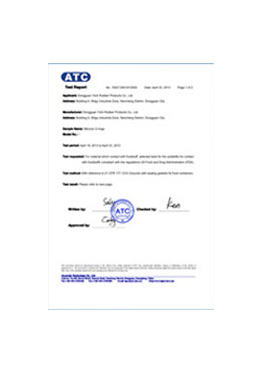Nov . 04, 2024 13:42 Back to list
Understanding the Importance of Rear Hub Oil Seals in Vehicle Maintenance
Understanding Rear Hub Oil Seals Importance, Function, and Maintenance
The rear hub oil seal is an essential component of many vehicles, particularly those with rear-wheel drive systems. It plays a critical role in maintaining the integrity and performance of the vehicle's rear axle and differential. In this article, we will explore the importance of rear hub oil seals, their function, potential issues, and maintenance tips to ensure longevity and optimal performance.
What is a Rear Hub Oil Seal?
A rear hub oil seal is a protective barrier located at the rear axle hub, designed to prevent the leakage of lubricating oil from the differential and axle housing. Typically made from durable materials such as rubber or polyurethane, these seals fit snugly around the axle shaft. They serve as a shield against contaminants, such as dirt and moisture, which can significantly harm the lubrication system and the components within the rear axle.
Importance of Rear Hub Oil Seals
1. Prevention of Lubricant Leakage One of the primary roles of the rear hub oil seal is to prevent the escape of lubricating oil. Adequate lubrication is necessary for the smooth operation of the axle and reduced friction, which in turn minimizes wear and tear on the components.
2. Protection from Contaminants By keeping dirt, grime, and moisture out, the rear hub oil seal helps maintain a clean environment for the rear axle components. Contaminants can cause significant damage over time, leading to costly repairs and replacements.
3. Enhanced Performance A well-functioning rear hub oil seal contributes to the overall efficiency of the vehicle's drivetrain. It ensures that the lubricant maintains its properties, providing maximum protection and performance during operation.
4. Cost-Effectiveness Regularly maintaining and replacing worn or damaged rear hub oil seals can prevent more significant issues, saving car owners from expensive repairs and part replacements down the line.
Common Issues with Rear Hub Oil Seals
Despite their importance, rear hub oil seals can sometimes fail due to several factors
1. Wear and Tear Over time, exposure to heat, pressure, and contaminants can cause the oil seal to degrade. Age and mileage are contributing factors to the wear and tear of seals.
rear hub oil seal

2. Improper Installation If the oil seal is not installed correctly, it may not create a proper seal, leading to leakage. It is crucial to follow manufacturer guidelines during installation to ensure an effective seal.
3. Axle Misalignment If the axle is misaligned, it can place undue stress on the oil seal, leading to premature failure. Regular inspections can help identify alignment issues before they become problematic.
4. Contaminated Lubricant Using polluted or incorrect lubricant can also impact the longevity of the rear hub oil seal. It's vital to use manufacturer-recommended oils and lubricants to mitigate this risk.
Maintenance Tips
To extend the life of the rear hub oil seal and promote efficient operation, consider the following maintenance tips
1. Regular Inspections Regularly inspecting the rear axle and hub assembly for signs of wear, cracks, or leaks can help catch issues early. Look for any signs of oil accumulation around the hub, which may indicate a failing seal.
2. Use Quality Parts When replacing a rear hub oil seal, always opt for high-quality components that meet manufacturer specifications. This adherence to quality will enhance performance and reduce the likelihood of premature failure.
3. Proper Installation Ensure that the seal is installed correctly and securely. If unsure, consult a professional mechanic or refer to the vehicle’s service manual.
4. Change Lubricants Regularly Follow the manufacturer's recommendations for regular lubricant change intervals. Doing so will help maintain the proper viscosity and cleanliness of the lubricant, which is crucial for the functioning of the rear hub oil seal.
Conclusion
The rear hub oil seal is an integral part of a vehicle's rear axle and drivetrain system. Understanding its role, potential issues, and the importance of maintenance can significantly contribute to the vehicle's overall reliability and performance. By taking proactive steps to ensure the health of this vital component, vehicle owners can enjoy smoother rides and avoid unnecessary repair costs in the long run.
-
TCN Oil Seal Metal Ring Reinforcement for Heavy Machinery
NewsJul.25,2025
-
Rotary Lip Seal Spring-Loaded Design for High-Speed Applications
NewsJul.25,2025
-
Hydraulic Cylinder Seals Polyurethane Material for High-Impact Jobs
NewsJul.25,2025
-
High Pressure Oil Seal Polyurethane Coating Wear Resistance
NewsJul.25,2025
-
Dust Proof Seal Double Lip Design for Construction Equipment
NewsJul.25,2025
-
Hub Seal Polyurethane Wear Resistance in Agricultural Vehicles
NewsJul.25,2025
-
The Trans-formative Journey of Wheel Hub Oil Seals
NewsJun.06,2025
Products categories
















